I just couldn’t resist posting this picture today. There are a bunch of garden gurus out there who claim that slugs won’t cross crushed eggshells. I, personally, have never seen a slug halted by them.
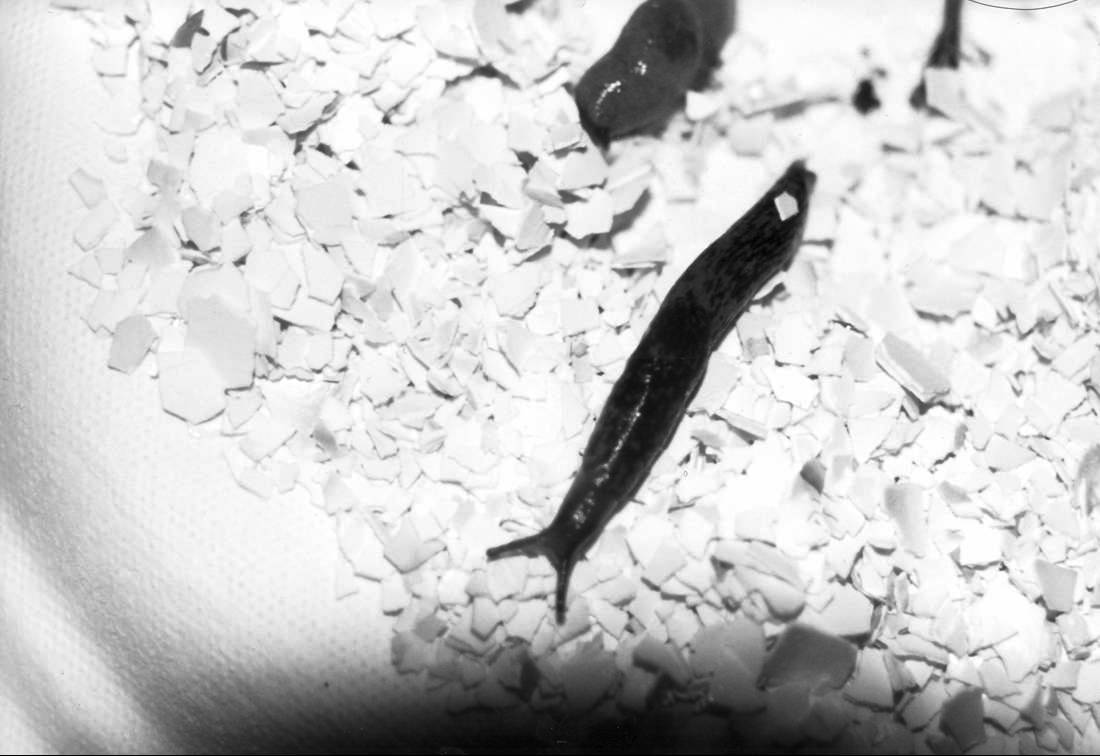
Over the last few weeks I’ve said a lot of complimentary things about the Minnesota Nursery Industry and how they’re careful to avoid situations where trees are planted too deeply. What I haven’t mentioned is that there is a reason for this. During the 1980s and early ’90s trees were usually planted deeply with lots of soil over the uppermost roots. It was just common practice. Unfortunately this practice led to roots growing across the trees stems and, when those roots cross the stem, the roots always win (as you saw in Linda’s quiz last week)! Many, many trees planted in that era have trunks which enter the ground looking like the picture below. You can clearly see the roots strangling the tree. This photo was actually taken last year on this campus!
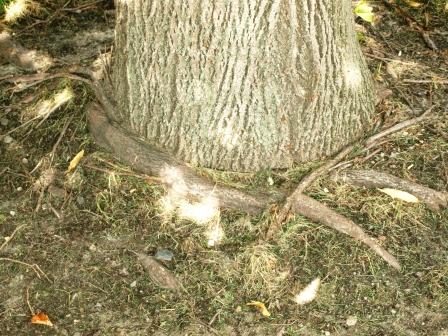
This tree is one of the lucky ones. These girdling roots were removed, the layer of soil over the crown was removed, the crown of the tree was inspected, and it was determined that this tree could survive. Many others planted during the 80s and 90s are not so lucky — in fact, many are suffering or dead.
An outcry over the last dozen years or so, mostly from cities (St. Paul and Minneapolis), led to changes in harvest by the nursery industry, and by the landscapers who install the trees. Yesterday I received a plan for planting trees up and down a major highway here in St. Paul to review. The specs were very specific — and similar to the specs that we see now across the Twin Cities and most of Minnesota. Root flare must be at, or even above, the surface of the soil.
I don’t want anyone to get the wrong idea. There are still those who sell nursery stock with the root flare buried deep under soil in the ball, and there are landscapers who dig a hole twice as deep as the depth of the ball before planting, but it’s becoming less and less of an issue as, in general, we seemed to have learned from past mistakes.
I’m frequently asked to give seminars on selecting healthy plants at the nursery, especially trees and shrubs which can run hundreds of dollars. (Nobody seems to want a seminar on how to pick out a flat of petunias.) I routinely visit nurseries with my camera so I can record examples of good and not-so-good choices. What better forum to share these than on our blog? I’m also curious whether the problems we see in the Pacific NW are found elsewhere in the country, or in the world for that matter. So today we’ll hunker down on our hands and knees and inspect root flares.
The root flare (or root crown) is the point where the trunk meets the roots and should be wider than the rest of the trunk. The photo below shows this clearly:
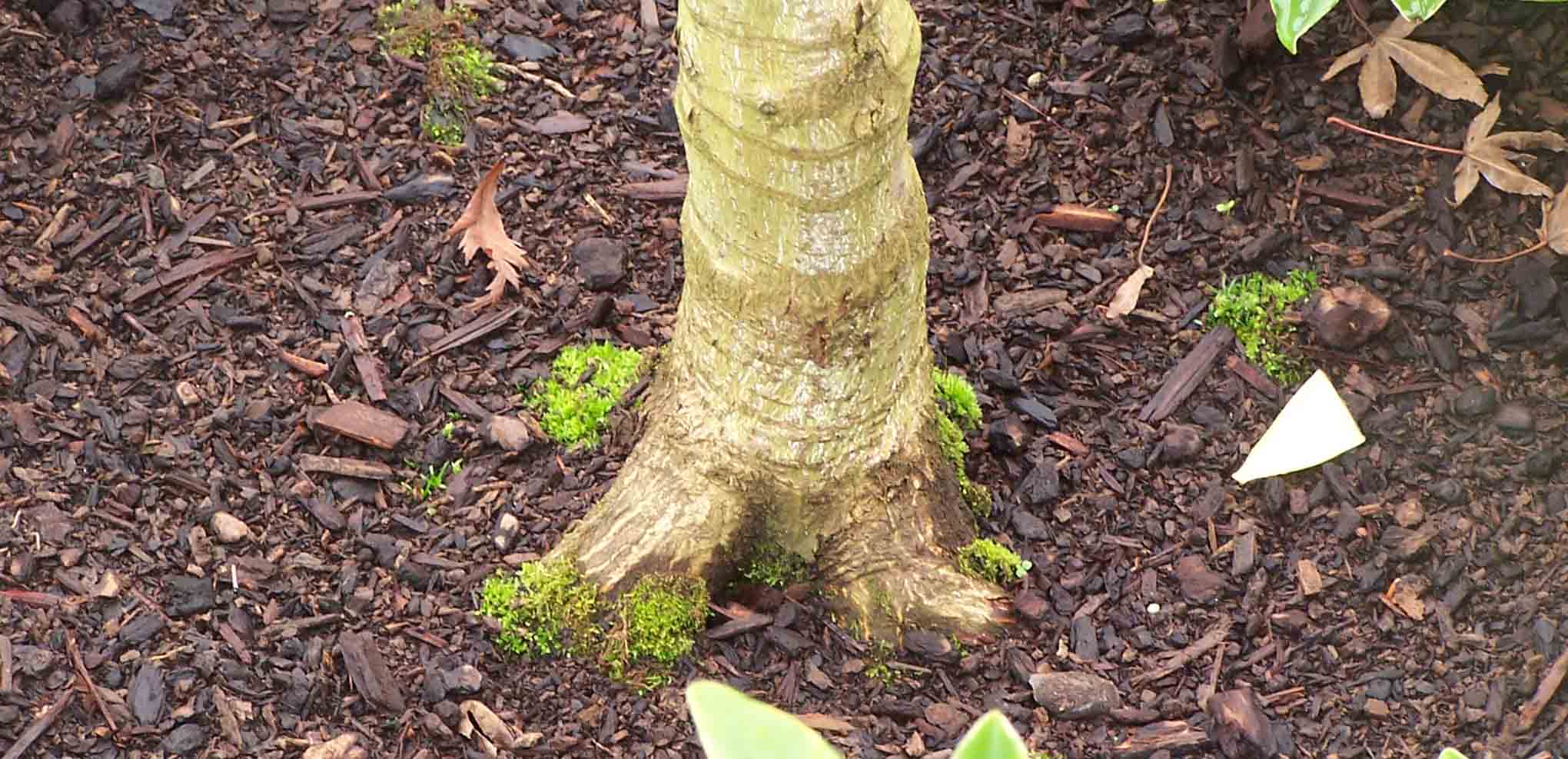
In balled and burlapped trees and shrubs, you might not be able to find the root flare as soil and/or burlap cover the root flare. The tree below is burlapped far above its root flare:
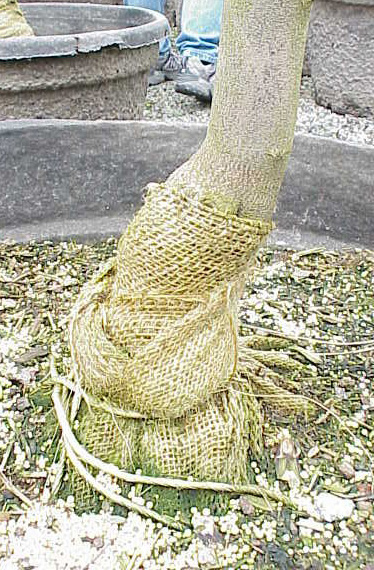
Over time, many trees and shrubs buried too deeply will develop trunk rot. You can inspect for rot by gently peeling back the burlap from the trunk and looking for damage. Don’t worry, this doesn’t hurt the root ball or the trunk:
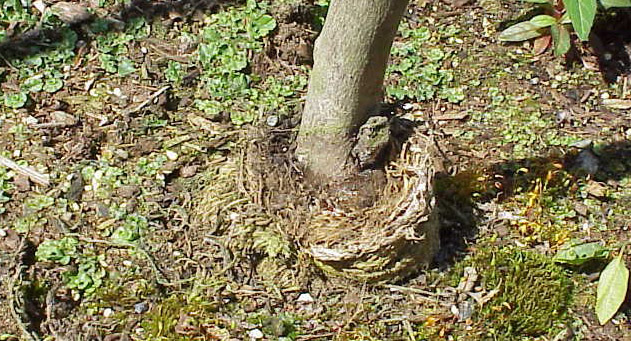
![]()
The tree in the above example already has some red flags – the presence of weeds on the soil surface suggests that it’s been in this pot for a long time. (And no, you don’t want to buy this tree.)
The most dramatic example of the problems that can occur is this weeping larch, which has been completely girdled by the rot induced by the burlap and twine around the trunk:
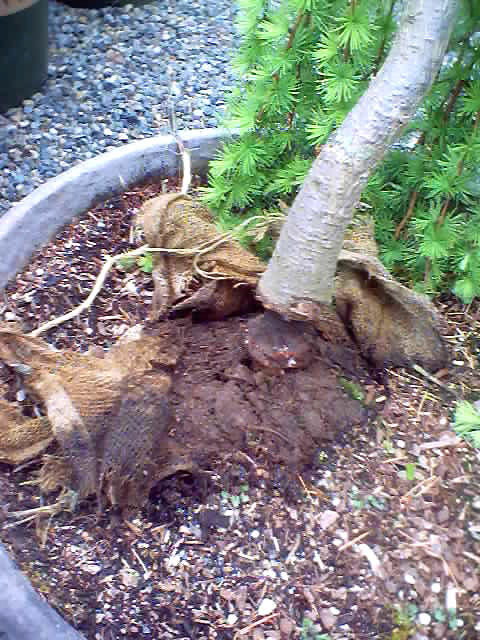
Lesson: It’s cheaper to wash your now-dirty pants than it is to buy (and eventually replace) a poor quality plant.
I know a few folks out there are starting to believe that I’m just an apologist for the nursery industry. While it’s true most of the nursery people with whom I work are hard-working folks trying to do their best to run a successful business and produce a quality crop, there are certainly some issues out there and I’ve got my share of pet peeves. One of the things really that chafes my heiney is what I refer to as “Carrot-top” syndrome in eastern white pine (Pinus strobus). White pine is one of the most commonly planted conifers in this part of the world. White pine is native throughout much of the eastern US and is an extremely fast growing tree that makes a good ornamental when planted on the right place with room to grow. It is also widely grown as a Christmas tree in the Upper Midwest as well and therein lies the rub. Many nursery producers also grow Christmas trees and many Christmas tree growers also dig nursery stock. The result? White pines that have been heavily sheared as Christmas trees end up planted as landscape trees. Once in the landscape, the upper portions of the trees will quickly resume rapid growth, with some shoots growing 2’ to 3’ or more per year; while the side shoots that had been repeatedly sheared barely grow at all. After a couple of years the net result is neatly trimmed Christmas tree with a wooly beast growing out of its top. What’s the solution? Ideally producers should identify which portion of their trees will be sold as Christmas trees and which are destined for the landscape trade. Christmas trees can be sheared to meet demands of that market while landscape trees can be pruned much more lightly to maintain a single leader and conical form but keep obvious layers of whorls. The dilemma, of course, is that growers don’t always know which trees will end up and the Christmas tree lot and which will be dug for the nursery trade. The other, more challenging problem is that, given a choice, 99 out of 100 garden consumers will choose the neat-looking Christmas tree for the landscape, unaware of the wooly mess that’s about to be unleashed in their yard. The solution? Education on both sides; making growers aware of the issue and making consumers realize that the only way to have a natural-looking white pine in your yard is to start with a natural-looking white pine.
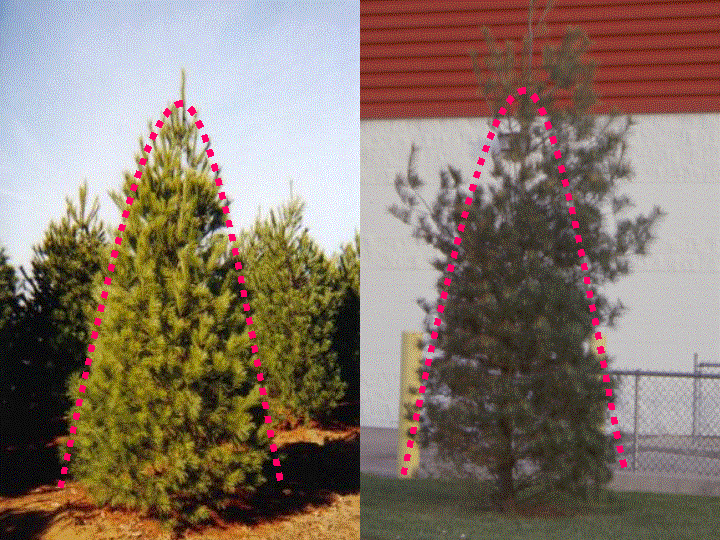
Heavily sheared pines will retain the outline from from shearing for years while the top rages out of control.
Linda referred to my recent absence from the blog – but it was in the name of education, I swear!
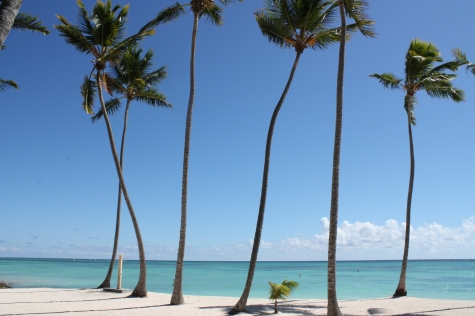
Cocos nucifera, the iconic coconut palm. My office for the past two weeks. Or a Corona advertisement. You pick.
This study abroad to the Dominican Republic sent Virginia Tech students (mostly biology and natural resources majors) to the Punta Cana Ecological Foundation for the entire semester, with faculty rotating in for two-week stints on topics from ornithology to geography. My topic was “tropical horticulture”. The professor previous to my session had to cancel his trip; by the time I arrived, the un-chaperoned students had basically gone feral. Corralling them with promises of beer and French fries, I coaxed them out onto plant i.d. walks. By the time our field trip to the national botanical garden rolled around, they were blurting out plant names left and right. Made me proud!
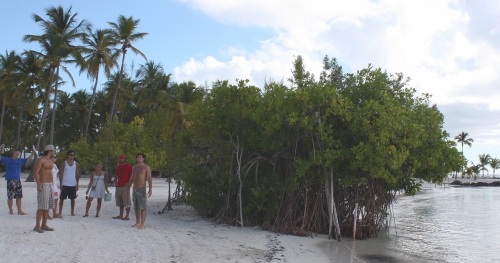
Identification walk featuring salt-tolerant plants. That’s red mangrove, Rhizophore mangle, on the right. Feral students on left.
The ecological foundation’s shade houses, orchard, and organic veg gardens grow some of the produce for the resort and made for a great learning experience (unusual greenhouse pest problem: tarantulas). I’ll post more tropical plant pics and factoids in January – when we’ll really, really need to see them.

Morinda citrifolia, better known as Noni. Though chock full of vitamins and all manner of secondary metabolites of medicinal interest, the smell of ripe Noni is comparable to Limburger cheese left in the sun for several days. Shrieks of “NONI!!!” meant someone was about to get pelted with over-ripe fruit.
end about the tree failure question! Many of you zoned in on an important point visible in the two photos I shared. The tree’s base was obviously quite narrow where the trunk broke, and with the tree’s vase-like architecture this led to breakage. But why was the base so narrow?
Again, several of you thought about root issues, such as a restricted root zone, or possible damage to the lower trunk. Actually, it’s a combination of root and trunk issues, as this last photo shows:

What we have is a large circling root (you can see it at the soil surface to the left and right of the trunk) that has girdled the trunk completely and prevented it from growing in diameter. The trunk above this point continued to grow, eventually creating the instability that eventually led to failure.
This tree used to be the focal point of a small urban landscape. It was planted about 15-20 years prior to failure and obviously had poor roots. It irks me that the industry cannot figure out a way to (a) produce trees with decent roots and (b) plant them correctly. No wonder so many ISA-certified arborists are now recommending that people only purchase bare-root trees, so that these heart-breaking scenarios are avoided.
Congratulations to Jimbo in Australia for being the first to identify this particular problem, and honorable mentions to those of you who had logical and realistic diagnoses for tree failure.
(I hate to take pleasure out of the fact that girdling roots are a significant source of tree failure in Australia, but Jeff and Bert give me so much grief about root washing that I was starting to wonder if it was only the Pacific NW that was cursed with this problem. Guess not!)